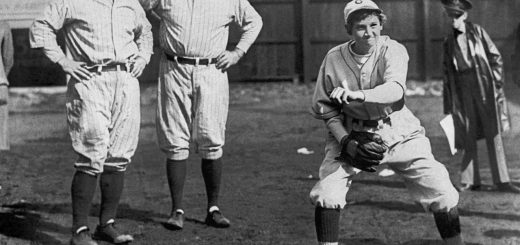42 (film)
“42” is a 2013 American biographical sports film written and directed by Brian Helgeland about the racial integration of American professional baseball by player Jackie Robinson, who wore jersey number 42 through his Major League career. Film was nominated for the “Satellite Awards” for Best Supporting Actor (Harrison Ford).
Plot
The film tells the story of Jackie Robinson and, under the guidance of team executive Branch Rickey, Robinson’s signing with the “Brooklyn Dodgers” to become the first African-American player to break the baseball color barrier.
In 1945 Robinson and his team, the “Kansas City Monarchs”, stop by a gas station. When the attendant refuses Robinson entry to the washroom, Robinson says they will find another station at which to fill up the team bus. As Robinson steps out, a scout for the Dodgers sent by Rickey approaches him and invites him to Brooklyn. He is offered a $600 per month contract and a $3,500 signing bonus, which Robinson accepts after being warned by Rickey that he must control his temper if he wants to play. During spring training, Robinson earns a roster spot with the Montreal Royals, the AAA affiliate of the Brooklyn farm system. After a great season there and spring training in Panama, he advances to the Dodgers. Most of the team soon signs a petition, stating they refuse to play with Robinson, but manager Leo Durocher insists Robinson will play with the main team.
In a game against the “Philadelphia Phillies”, manager Ben Chapman taunts Robinson, causing him to go back to the dugout and smash his bat out of frustration. With encouragement from Rickey, Robinson then returns to the field and hits a single, steals second base and advances to third on a throwing error, and scores the winning run. When Chapman’s behavior toward Robinson generates bad press for the team, the “Phillies’” owner requires him to pose with Robinson for newspapers and magazine photos.
Later, Robinson’s teammate Pee Wee Reese comes to understand what kind of pressure Robinson is facing, and makes a public show of solidarity, standing with his arm around Robinson’s shoulders before a hostile crowd at Crosley Field in Cincinnati, silencing them.
The story focuses mostly on the 1947 Brooklyn Dodgers season and somewhat on Robinson’s 1946 season with the Montreal Royals, which emphasize his battles with racism.





